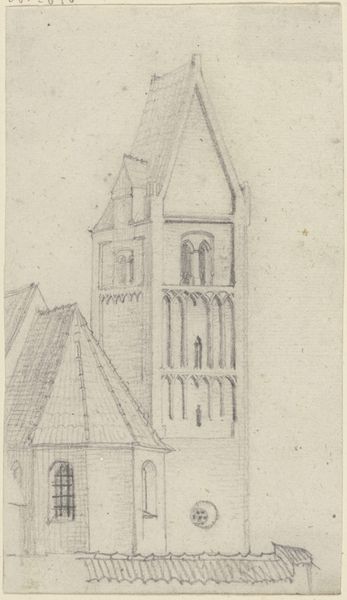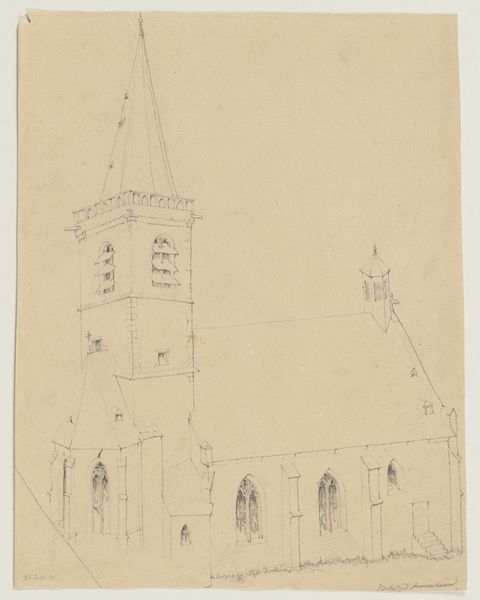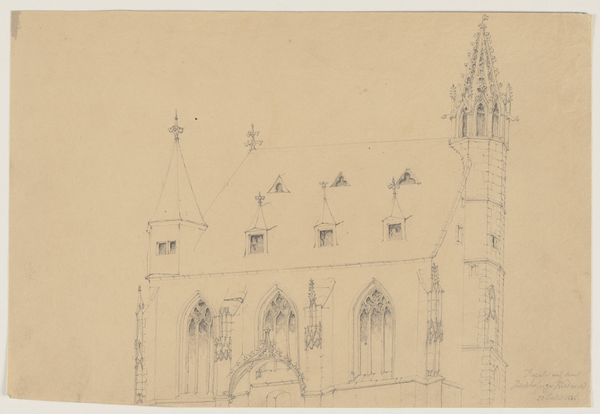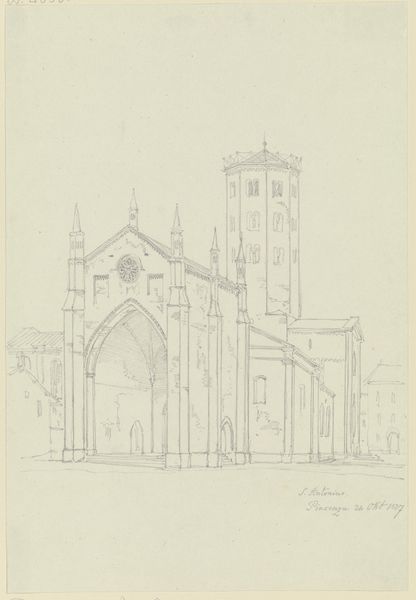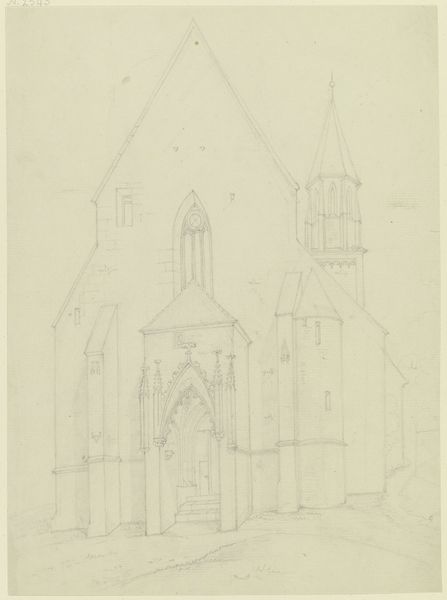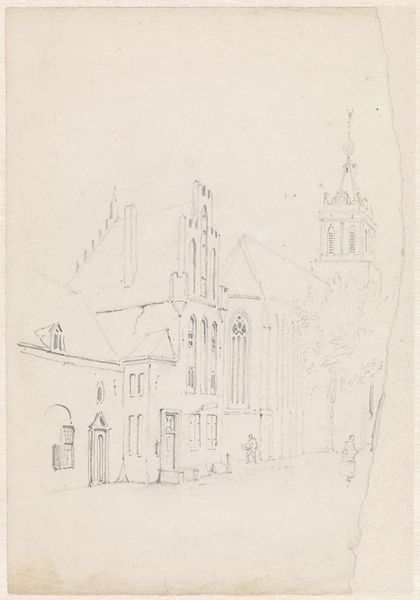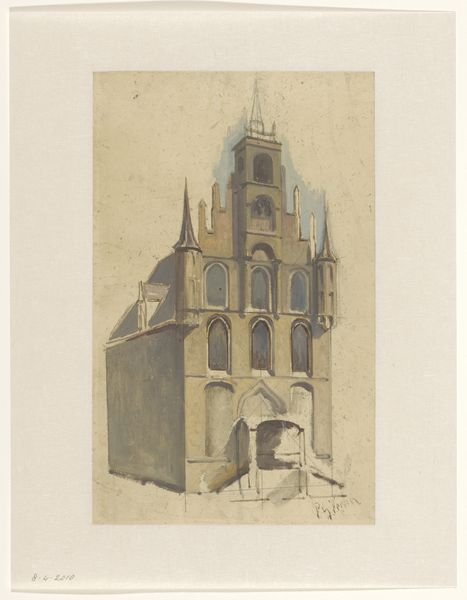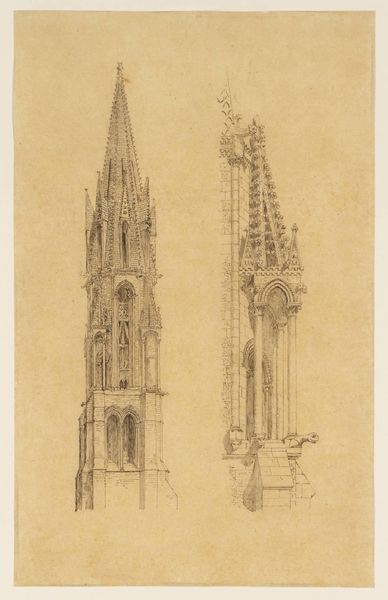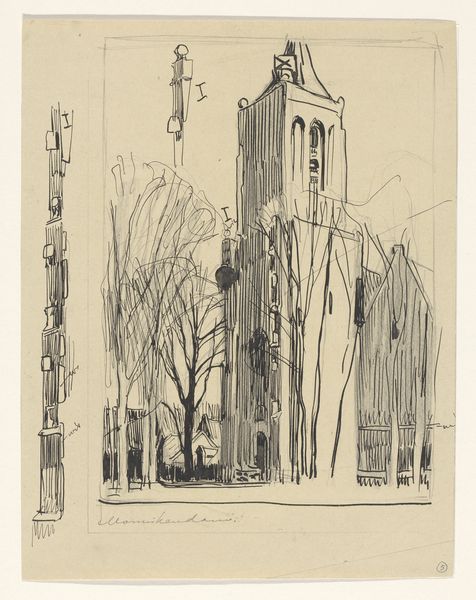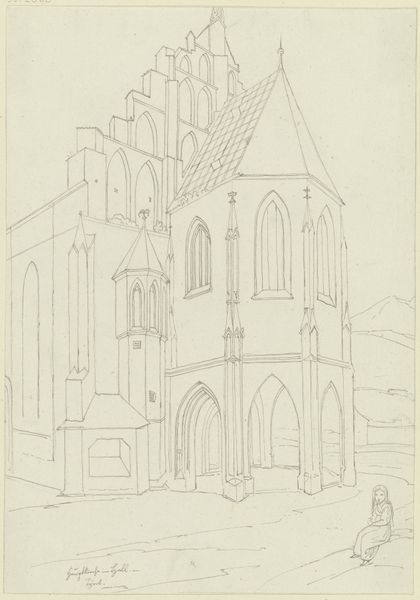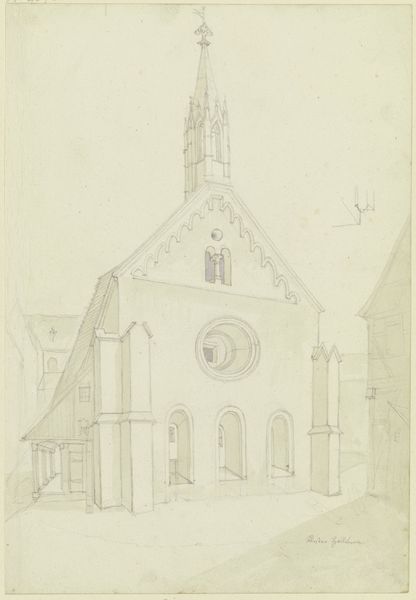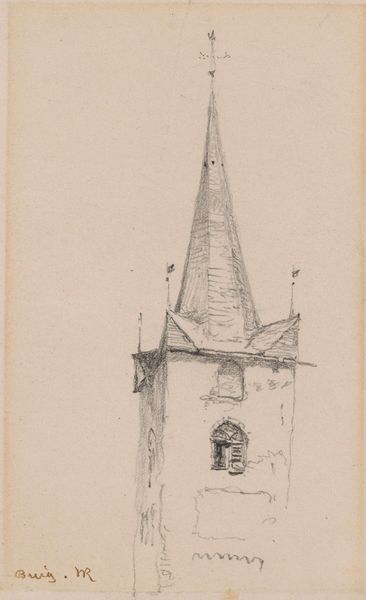
drawing, paper, ink, pencil
#
drawing
#
landscape
#
paper
#
ink
#
pencil
#
cityscape
#
realism
Dimensions: height 175 mm, width 124 mm
Copyright: Rijks Museum: Open Domain
Curator: Before us, we have Adolf le Comte's "Tower of the Oude Kerk in Delft," likely created between 1860 and 1921. It's an ink and pencil drawing on paper. What strikes you first about it? Editor: It has such an ephemeral feel, like a fleeting impression captured in a moment. The grey tonality combined with the stark white paper suggests a cloudy day, but it is still light and breezy. Curator: Indeed, the use of line is quite economical. Le Comte isn't just representing the tower; he's conveying the essential structural elements. Observe the triangulation, how the convergence of lines creates this soaring effect, this architectural prowess in symbolic form. Editor: I'm drawn to the materiality too. The way the ink bleeds into the paper in certain spots, creating soft shadows—it speaks to the labor of drawing, the artist's hand physically engaging with the tools. This texture adds depth to the relatively minimalist rendering. I'm curious about the choices of the materials for this artistic interpretation. Curator: Precisely! Consider how the limitations of pencil and ink guide the forms represented. Le Comte emphasizes key details: the repeated lines, window patterns and delicate finials and other small details. They become symbolic. He's using a restrained visual vocabulary to highlight the significance of this historical site. Editor: It makes you wonder about the context in which it was produced, too. Was it a preliminary study for something larger? A work made quickly en plein air for leisurely observation? These marks preserve something transient about both the landscape and the act of seeing it. Curator: A fruitful question to consider! The spatial organization is deliberately selective. We are encouraged to experience not simply the appearance of architectural height, but rather a sensation, as though rising. Editor: Absolutely. It leaves me contemplating not only the skill of Le Comte but also the simple pleasure derived from translating the weight and history of architecture into something so delicate, tangible, and readily available on paper and with these types of artistic tools. Curator: And it underscores the profound power of formal elements in art to elicit meaning from everyday objects and translate this value to viewers like ourselves, wouldn't you agree? Editor: Yes. A quick yet complex observation.
Comments
No comments
Be the first to comment and join the conversation on the ultimate creative platform.
